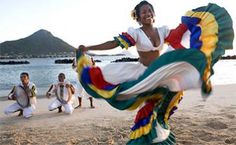About Mauritius
The Republic of Mauritius is an island nation in the southwest Indian Ocean off of Africa’s southeast coast. It sits 900 km east of Madagascar. Additional islands are also part of the country, including Agalega, Cargados, Carajos, and Rodrigues.
The island was uninhabited until the 1600s when it was first ruled by the Dutch and later the French. During the Napoleonic Wars, Britain controlled the area until its independence in 1968. Port Louis is the capital and the country’s area is 2,040 sq. km. Mauritius is a parliamentary republic that is part of the Common Market for Eastern and Southern Africa, the African Union, the Southern African Development Community, La Francophonie, and the Commonwealth of Nations.
Its economy is considered upper middle income. French, English, and Mauritian Creole are main languages spoken in the country. English is the only official language, but Mauritian Creole is the most widely used. The current population of Mauritius is 1,270,454 as of March, 2019, based on the latest United Nations estimates. Most people are of Indian descent. It is the only nation in Africa with Hindu as the major religion.
The island is best known as the only home of the dodo, which was sighted by Europeans around 1600. Due to its weight and lack of flying ability, it was easy prey for Europeans and became extinct within 80 years.
History
The country was uninhabited until Europeans settled it in the 17th century. Swahili, Arab, and Malay sailors knew about the islands by the 10th century. The Dutch established a settlement in 1638. After 100 years, the Dutch abandoned the settlement because of cyclones and its overall deterioration. France took control of it in 1715. A prosperous economy based on sugar production developed.
During the Napoleonic Wars, the French surrendered the island to the British. The surrender’s terms allowed them to keep their property, land, language, and legal system. In 1968, the island became independent from Britain.

